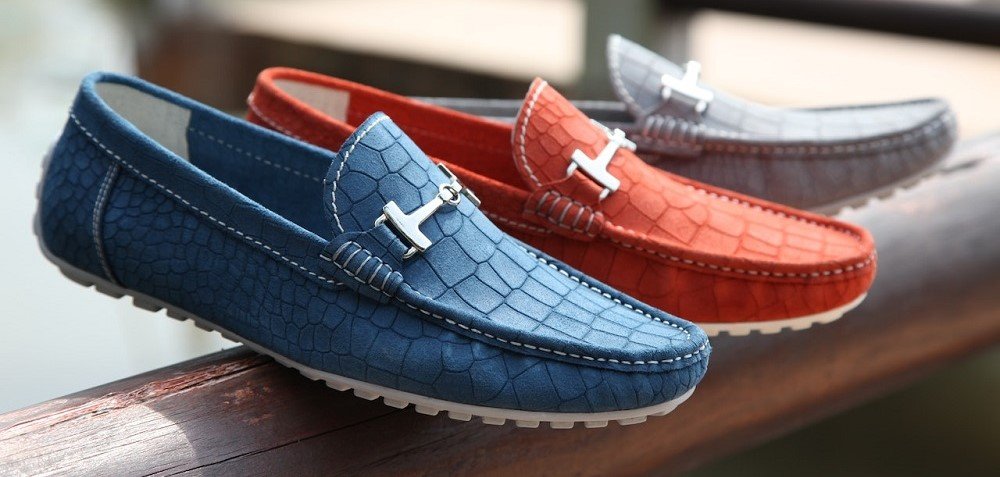
If you have diabetes, taking proper and continuous care of your feet can positively impact the feet, ankles, and lower legs.
Diabetes foot ulcers are among the most prevalent foot diseases encountered by diabetic individuals. These open sores or ulcers mainly occur on your foot and are frequently caused by pressure from ill-fitting shoes.
“Diabetic shoes reduce the likelihood of diabetic foot sores, lowering the chance of amputation. “
Because many people with diabetes have neuropathy or nerve loss, they lose their capacity to sense pain in their feet. As a result, individuals may not even know their shoes have created a cut on their feet.
Diabetic shoes that are correctly fitted provide support and protection while minimizing the stress on high-pressure regions of the foot.
This article will discuss what diabetic shoes are and why you need them.
Maybe they work even better in combination with diabetic socks.
What are Diabetic Shoes?
Diabetic Shoes, also known as Therapeutic Footwear, Sugar Shoes, or Extra Depth Shoes, are customized shoes meant to prevent skin degradation in diabetics.
Diabetic shoes are made with unique protective inserts and soft shoe materials to address neuropathy (numb feet), poor circulation, and foot abnormalities (bunions, hammertoes, etc.). The shoes reduce the likelihood of foot sores (ulcers) produced by friction and pressure. Foot sores can result in infection, gangrene, and even amputation.
The foot and ankle surgeon may take measurements of the patient’s foot and produce the shoes in a specialized laboratory. In some situations, they will provide the patient with a prescription for custom-made shoes.

What is the Difference Between a Diabetic Shoe and a Regular Shoe?
Diabetic shoes have a unique form and style, and they are developed exclusively for those with diabetes, which causes circulation and feeling problems, particularly in the feet.
Diabetic neuropathy can produce symptoms in the foot, such as numbness, slow-healing wounds, cuts, or ulcers. These unique shoes for people with diabetes are meticulously designed to prevent cuts, scrapes, wounds, and skin irritation, unlike regular shoes.
Diabetic shoes have a protected lining made of soft and comfortable materials and stitching that does not stick out and irritate the skin. The design that does not exert pressure on the forefoot avoids irritation of the toes, sides of the foot, and rear of the heel.
You shouldn’t wear regular shoes if you have diabetes. Because Diabetic shoes might help protect your limbs since nonhealing wounds can lead to a severe infection that necessitates amputation.
Compared to other regular shoes, you’ll discover that diabetes shoes have a unique construction.
Regular shoes, including sneakers made for comfortable walking and running, may not always match the rigorous requirements of diabetes patients.
Features Of Diabetic Shoes
- It has a protected inside of soft and comfortable fabrics, with stitching that does not stick out and irritate the skin.
- It has a design that does not exert pressure on the forefoot and avoids irritation of the toes, sides of the foot, and rear of the heel.
- The material used for the shoes is somewhat elastic, allowing the shoe to adjust to the foot’s shape and prevent pressure areas.
- It has a deep toe box that prevents pressure on the toes and allows free flexibility.
- Extra-deep to encourage blood flow and healing
- Cushioning in the soles is lightweight and supportive, allowing for smooth mobility and helping to minimize a substantial impact on the foot.
What Shoes Should People with Diabetes not Wear?
- Avoid High-heeled shoes at all costs since they exert pressure on the ball of your foot. High heels might also interfere with your equilibrium, especially if you have nerve problems. If you have nerve damage, you may not notice that a region is painful or developing calluses.
- Avoid wearing sandals, flip-flops, or other open-toed footwear. Straps can put a strain on your foot, causing sores and blisters. Open-toed shoes might put you at risk for injuries such as cutting. It also makes it simpler for gravel and tiny stones to get inside. These can cause rashes and blisters by rubbing against your feet.
- Do not wear a slip-on. Instead of slip-on, consider laced shoes. They frequently give more support and a better fit.
- Do not wear uncomfortable shoes. Buy comfortable shoes and break them in as soon as possible. When you first try on shoes, they should feel comfortable. If you remove new shoes after a few hours and discover red, sore patches, don’t wear them again.
- Try not to have just one pair of comfortable shoes. Purchase at least two pairs of supportive shoes. Because each pair will most likely have distinct pressure spots on your foot, you should change your shoes regularly. When you aren’t wearing a pair, dry and air them out.
- Avoid going barefoot. Even around the home or pool, don’t go barefoot. Wear comfortable shoes all the time.
Diabetic Shoes: Do You Need Them?
Many individuals are unaware that there are special shoes for everything. For instance, Weightlifters do not wear jogging shoes, neither do runners wear basketball shoes nor do baseball players wear tennis shoes. Shoes are made for different people and different hobbies.
Diabetic shoes are no exception. Diabetic shoes are specially developed to protect the foot from stresses that might cause skin breakdown and lead to severe sores and ulcers. If you have diabetes and do not wear diabetic shoes, you should immediately talk to our doctor about your choices.
The hazards of diabetic foot wounds are especially significant since poor circulation and neuropathy diminish the nerves’ capacity to repair and perceive injury to the feet at all, resulting in problems that are not felt and hence not addressed.
Sores can develop into wounds and ulcers without anybody noticing. These wounds can then get infected, leading to severe, life-threatening illnesses such as amputation.
A decent diabetic shoe gives not only comfort but also protection. Diabetic shoes help avoid the formation of ulcers, foot strains, and calluses. To prevent discomfort produced by materials rubbing against the foot as you move, the interior is comprised of comfortable seam-free fabrics with no stitching.
Diabetic shoes are essential not just for diabetic people who have a history of sores and ulcers. These shoes can help to avoid the formation of sores and ulcers, as well as foot strains and calluses.
Does Insurance Pay for Diabetic Shoes?
Typically, Medicare pays 80% of the cost of diabetic shoes.
Medicare statutes have been updated to include specific therapeutic shoes, inserts, and potential modifications for patients who meet the stated conditions. Diabetic footwear, unlike ordinary footwear, is meant to avoid shearing, achieve complete contact with the bottom of the foot, and maintain a higher depth. Medicare covers diabetic shoes, inserts, and/or adaptations under the following criteria.
What are Medicare’s Requirements?
In most situations, Medicare will cover purchasing special shoes for people with diabetes. However, a doctor must prescribe them. You must fulfill specific conditions, such as foot shape alterations, previous foot ulcers, or calluses that might cause nerve damage. Here are a few of these conditions
If you have diabetes and three or more of these symptoms:
- Amputation of the foot, either partial or whole
- Foot ulceration in the past
- Callus development before ulceration
- Damage to the nerves
- Circulation issues
- Deformity of the foot
Additionally:
- You are being treated by a physician as part of a complete diabetes management plan and must have seen your Primary Care Physician within the last six months.
- Because of your diabetes, your doctor determines that you require therapeutic shoes and/or insoles.
To learn more, consult your foot doctor or primary care physician.
What Other Insurance Companies Cover the Cost of Diabetic Shoes?
Most insurance companies will cover the cost of diabetic shoes.
In Conclusion
Depending on your situation, your doctor can determine whether you need diabetic shoes or insoles and fit you for the proper footwear. Your doctor may decide that you can get diabetic insoles or stockings to support your feet and promote normal blood flow in some circumstances.
Alternatively, your doctor may determine that you require a mix of diabetes insoles, shoes, and diabetic socks.
Before purchasing any diabetic footwear, always see a doctor to verify you are getting the best option for you and your feet.
Eddie Vandam
Eddie Vandam, the voice behind the Senior Citizen Website, is a retired internet marketer and proud senior. With a passion for helping fellow seniors navigate the complexities of aging, Eddie shares his insights on health, independence, products, and enriching hobbies. He’s committed to making senior years both fulfilling and enjoyable. Read more about Eddie Vandam.
